Go the extra mile
Towards a cooler planet
Biodiversity-focused holiday itineraries for responsible travel
2 April 2025
Travelers are increasingly seeking meaningful ways to explore nature while supporting conservation efforts. Nature-focused tourism emphasises the protection of ecosystems and wildlife, aiming to minimise environmental impact and promote sustainability. Recent studies indicate a 76% surge in demand for environmentally conscious trips. Destinations such as Costa Rica, the Galápagos Islands, and African reserves are at the forefront, offering immersive experiences while preserving delicate habitats.
Collaborations with organisations like Re:wild, which works with over 500 partners in more than 80 countries to protect and restore biodiversity, ensure both traveller safety and positive conservation outcomes. Small-group expeditions and environmentally sensitive lodges help alleviate the pressures of overtourism. This article highlights premier destinations, offers planning advice, and explores how travel contributes to global conservation initiatives.
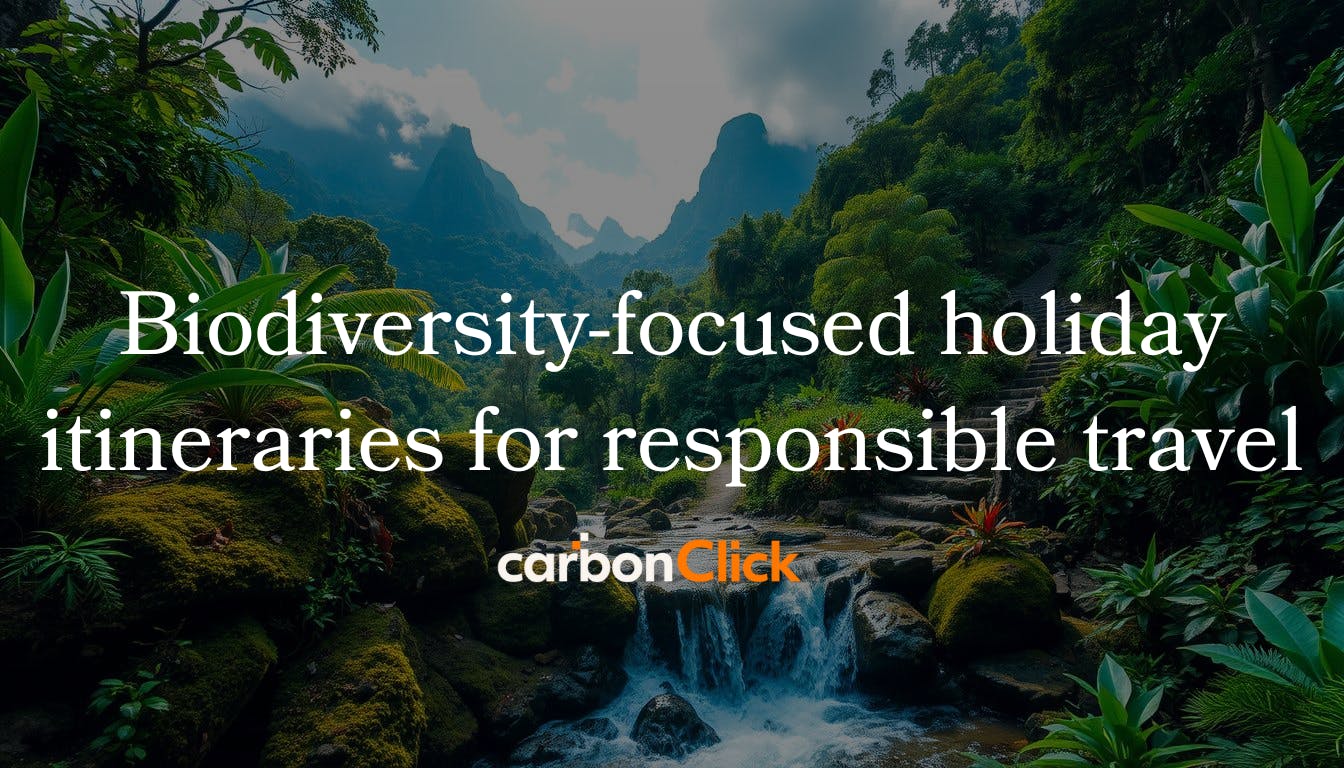
Why choose biodiversity-focused travel?
Sustainable travel choices have a direct impact on wildlife preservation and bolster local economies. Nature-based tourism creates employment opportunities in host communities, ranging from guides and park rangers to hospitality staff and artisans selling local crafts. This diversification of income sources reduces reliance on single industries, such as agriculture or logging, which can be ecologically harmful. Additionally, revenues generated from nature-based tourism can be reinvested in local infrastructure, education, healthcare, and other essential services that enhance overall community well-being.
Active conservation areas often report increases in wildlife populations, as tourism funds contribute to anti-poaching patrols and habitat restoration efforts. For instance, Re:wild collaborates with over 500 partners in more than 80 countries, actively conserving 265 threatened species and benefiting over 31,000 species globally.
Responsible wildlife interactions are crucial. Comparing elephant sanctuaries that focus on rehabilitation to those that exploit animals for entertainment highlights the importance of informed choices. Projects like Following Giants in Thailand demonstrate how responsible tourism can enhance animal welfare.
A significant proportion of travellers prefer operators certified for their environmental stewardship. Costa Rica exemplifies how sustainable tourism practices can protect ecosystems while providing enriching experiences for visitors. Engaging local guides not only enriches cultural immersion but also helps preserve traditions.
Opting for responsible travel supports both natural environments and local communities. Each visit to environmentally certified lodges or parks contributes to the conservation of delicate habitats and the livelihoods of those who depend on them.
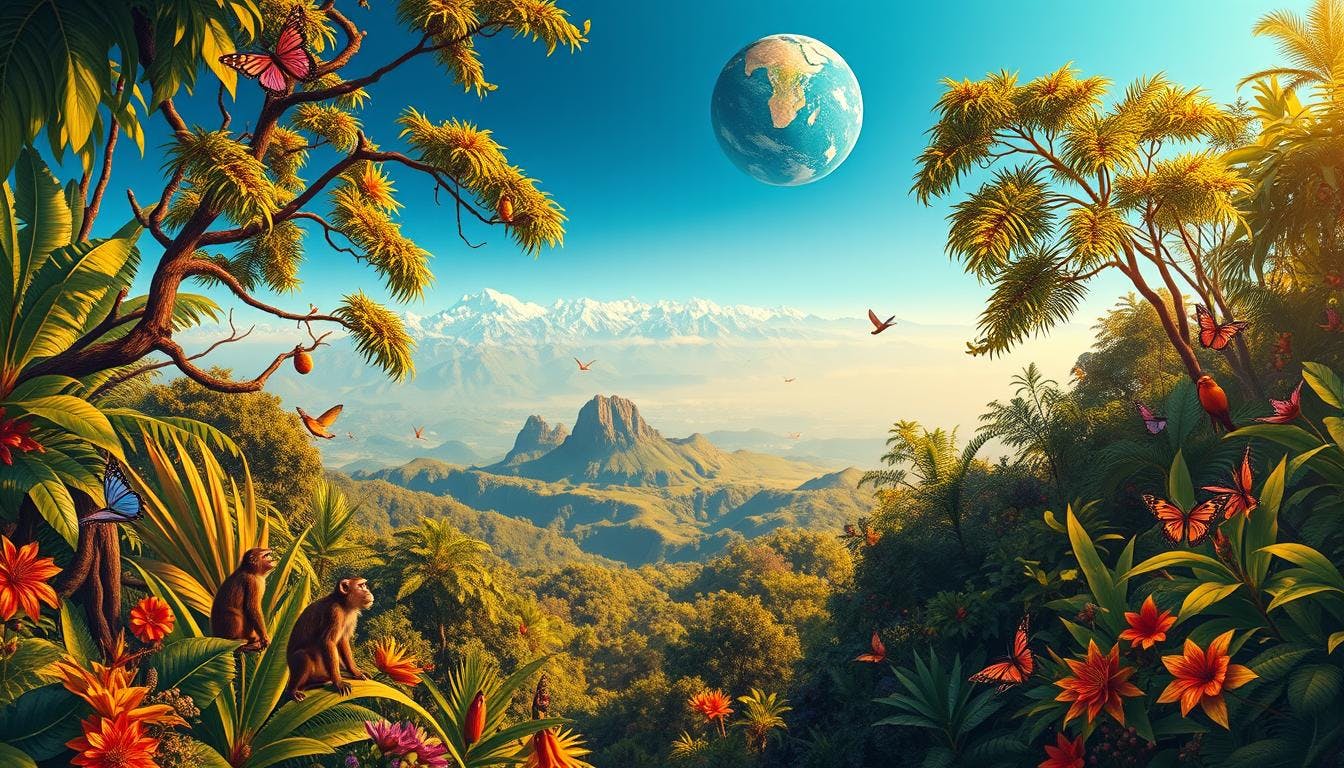
A global perspective on biodiversity-focused holiday itineraries
Global travel now offers opportunities to explore diverse habitats, from dense forests to expansive wetlands. The Danube Delta, spanning approximately 5,165 square kilometres, is home to over 300 bird species and 45 freshwater fish species, underscoring how tourism can harmoniously coexist with conservation efforts.
Travel experiences range from tropical rainforest explorations to Arctic tundra expeditions. Costa Rica's year-round biodiversity contrasts with the seasonal spectacles of Monarch butterfly migrations, highlighting the need for travel approaches tailored to each unique ecosystem.
UNESCO designates biosphere reserves to promote sustainable development by balancing human activity with nature conservation. These reserves, such as those in Colombia's Amazon and Scandinavia's fjords, offer public access programs that protect critical forests and marine systems.
The Azores serve as a convergence point for 28 cetacean species, making it a prime destination for marine life enthusiasts. Additionally, trekking requirements vary across regions; Borneo's humid trails differ significantly from Patagonia's rugged paths. Proper research ensures preparedness for these diverse terrains.
Top destinations for biodiversity on your next adventure
From dense rainforests to expansive savannas, these destinations offer unparalleled wildlife encounters, each balancing accessibility with stringent conservation standards.
Kenya's Maasai Mara is renowned for hosting approximately 1.5 million wildebeest during the annual migration. This safari hotspot exemplifies how tourism funds anti-poaching initiatives and community development projects.
Bhutan enforces a daily tourism fee of $200 to regulate visitor numbers and protect its ecosystems. This policy ensures sustainable access to its Himalayan trails and tiger reserves.
Norway's 47 national parks feature glacial hikes and Arctic wildlife, offering diverse natural landscapes. Similarly, New Zealand's Fiordland National Park shelters unique species, with 82% of its flora and fauna found nowhere else.
Ecuador's Yasuní Biosphere Reserve boasts a record 150 amphibian species per square mile, highlighting its rich biodiversity. Costa Rica's rainforests also rank among the most biodiverse, harbouring 6% of the world's species.
In terms of conservation priority, regions like Madagascar and Borneo are critical for protecting endemic species. The International Union for Conservation of Nature (IUCN) has highlighted that 43% of Madagascar's freshwater species are threatened with extinction, many of which are endemic. In Borneo, the Bornean elephant has been classified as 'Endangered' due to threats from human activities.
Wildlife enthusiasts can spot orangutans in Borneo and blue-footed boobies in the Galápagos, each offering unique viewing experiences.
Low-impact travel options, such as eco-lodges in Costa Rica and Zambia, minimize environmental footprints, supporting both conservation efforts and local communities.
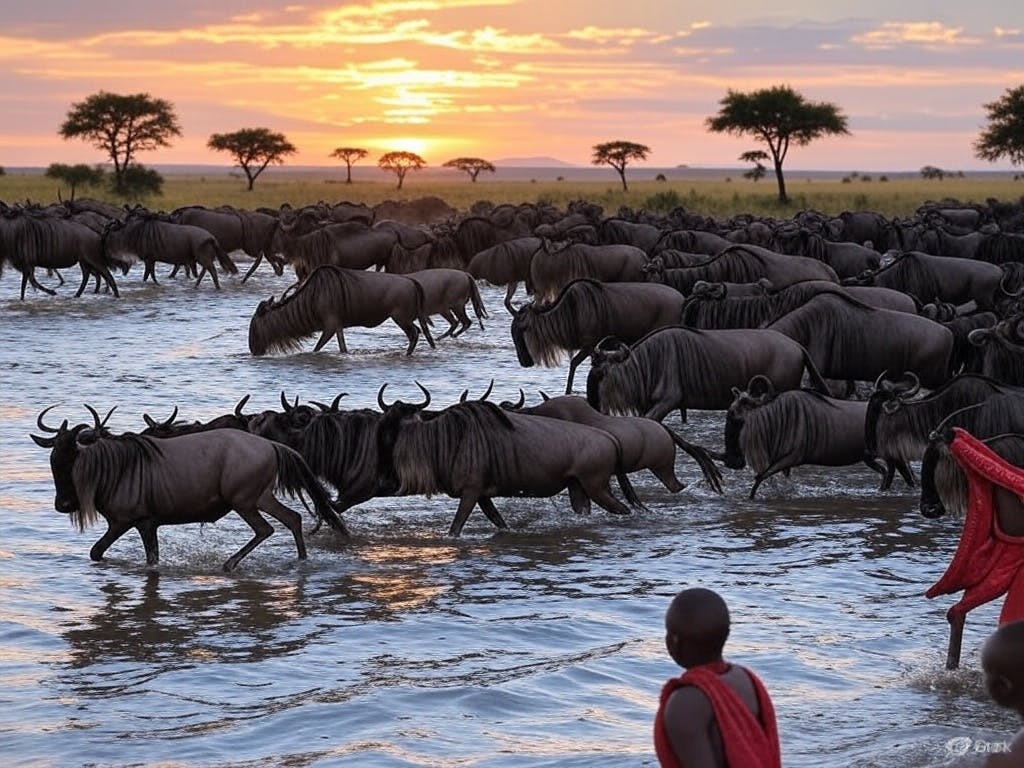
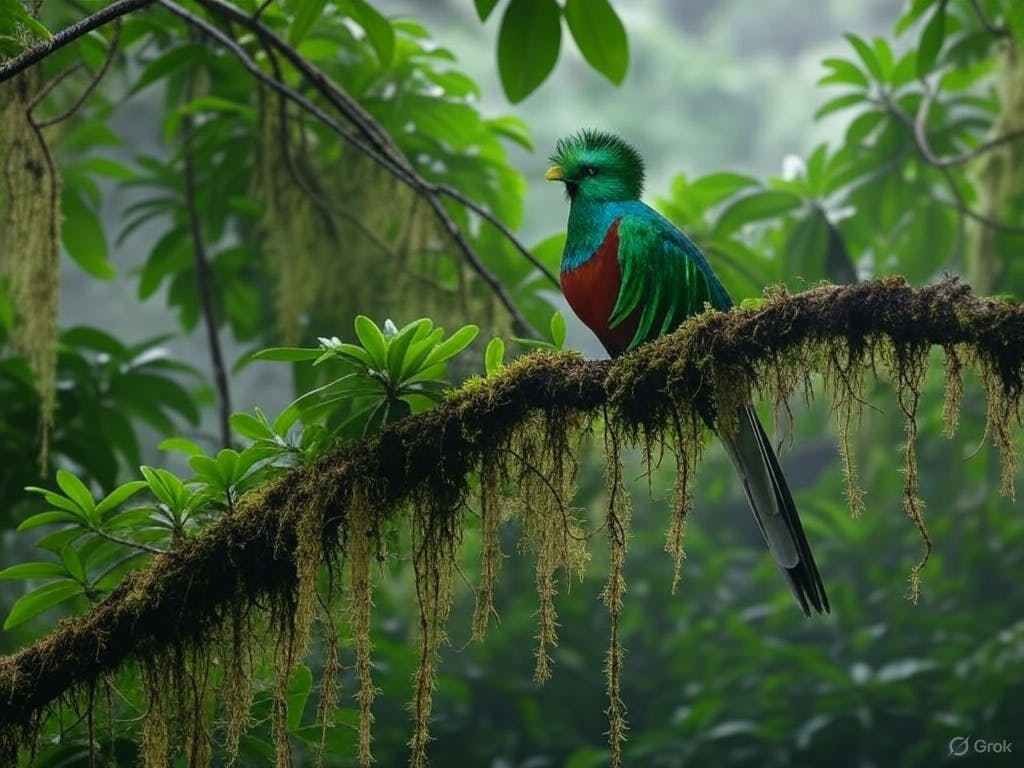
Discover Costa Rica’s rainforests and cloud forests
Costa Rica, despite covering just 0.03% of the Earth's landmass, harbours approximately 5% of the world's biodiversity.
Its rainforests and cloud forests are sanctuaries for rare species such as the resplendent quetzal, which flourishes in the misty canopies of Monteverde.
Monteverde's cloud forest reserves offer visitors extensive trails to explore this unique ecosystem safely.
Guided tours provide opportunities to observe a diverse array of wildlife, including toucans and various amphibians. Night excursions reveal the forest's nocturnal inhabitants, such as tree frogs and kinkajous.
Wildlife activity in Monteverde varies seasonally. The wet season, from May to October, enhances animal activity, while the dry season offers easier trail access. Many local lodges are committed to sustainability, utilising renewable energy sources to reduce the environmental impact of tourism.
Costa Rica's dedication to conservation is evident in its protected areas. The Talamanca Mountains are recognised as a UNESCO World Heritage Site, safeguarding critical habitats. Additionally, the Children's Eternal Forest, the country's largest private reserve, plays a vital role in preserving biodiversity.
Birdwatching enthusiasts can embark on expert-led hikes targeting the resplendent quetzal among over 400 bird species found in Monteverde. Accommodations like Tiskita Jungle Lodge offer stays within private reserves, providing immersive nature experiences. Exploring the waterways of Golfo Dulce by boat or trekking sloth trails in La Fortuna adds variety to travel itineraries. Each of these activities supports local conservation efforts, including reforestation and anti-poaching initiatives
Wildlife wonders of the Galápagos Islands
Scientists call the Galápagos Islands a "living laboratory" because of their unique wildlife. About 97% of the reptiles and land mammals here are found nowhere else, including giant tortoises and marine iguanas. Strict conservation efforts help these species survive.
The Charles Darwin Research Station has been working since 1965 to protect giant tortoises. Its breeding programme has helped restore populations, and visitors can see hatchlings while learning about habitat conservation.
Snorkelling in the Galápagos lets travellers see sea lions, tropical fish, and other marine life up close. To avoid disturbing animals, rules require people to stay at least two metres away from wildlife, including marine iguanas. Only a small number of certified operators are allowed to run tours, helping to limit human impact.
- Flightless cormorants: Best seen between April and December on Fernandina Island.
- Citizen science: Tourists can record wildlife sightings through projects like iNaturalist.
- Clear waters: Great visibility year-round for spotting rays and sea turtles.
Because the Galápagos ecosystem is delicate, visitors must follow strict guidelines. Every activity, from hiking to snorkelling, helps support conservation. Local guides play an important role in ensuring that tourism remains respectful of wildlife.
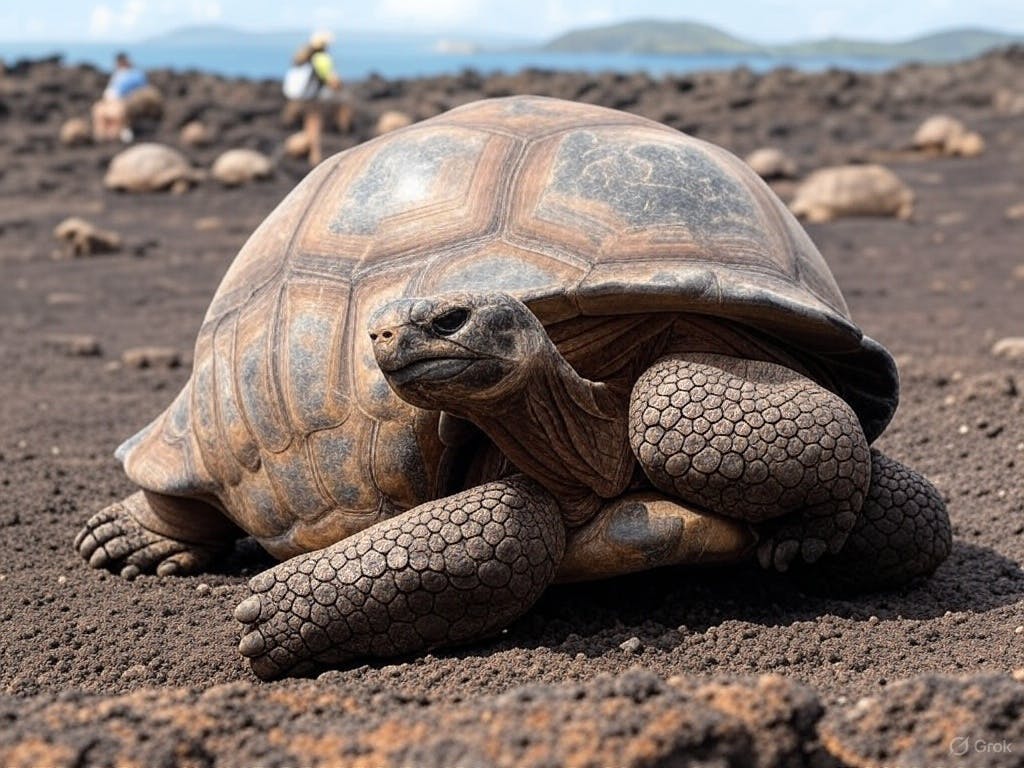
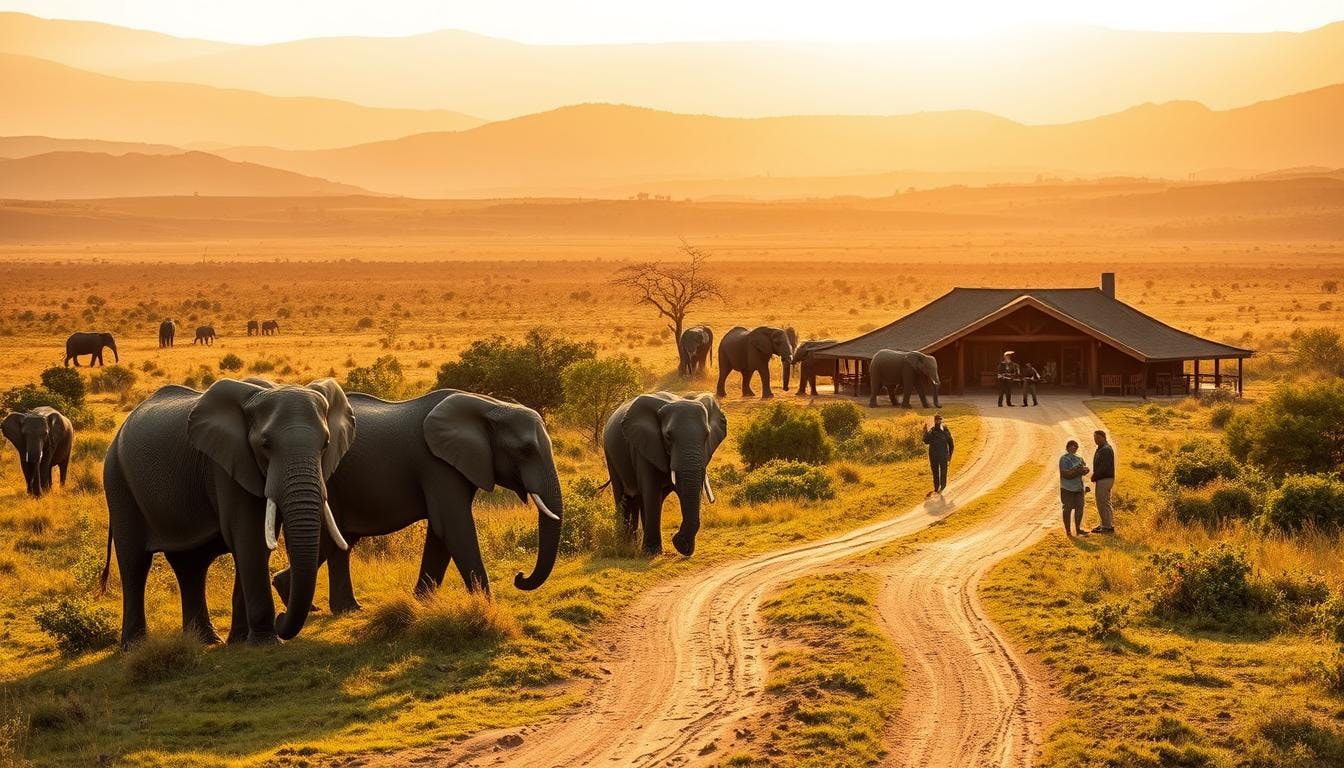
African safaris that protect wildlife
Modern wildlife tourism plays a crucial role in both viewing wildlife and funding conservation efforts. In Kenya's Lewa Wildlife Conservancy, for example, the black rhino population has increased from 350 individuals in 2014 to over 450 in 2024, showcasing the positive impact of tourism revenue on conservation initiatives.
Advanced technologies have significantly bolstered anti-poaching measures. Thermal imaging systems, introduced in Kenya's national parks and reserves starting in 2016, have led to the apprehension of over 250 poachers, with no rhinos poached in areas where these systems are operational.
Local communities also reap direct benefits from conservation-focused tourism. In northern Kenya, eco-lodges like Sasaab engage in elephant conservation and community programmes, providing employment and supporting local development.
Transportation choices further influence conservation outcomes. Electric game viewers produce zero emissions, while biodiesel models reduce carbon emissions by 60%, aligning tourism practices with environmental preservation.
Financially, a seven-night safari can fund the protection of approximately 1 square kilometre of wilderness, directly contributing to habitat preservation. Initiatives like the Reteti Elephant Sanctuary exemplify how tourism supports animal rehabilitation and conservation research.
In summary, responsible tourism integrates wildlife observation with tangible conservation benefits, fostering ecosystem protection, supporting local economies, and promoting sustainable travel practices.
Birdwatching paradises around the world
Protected habitats around the world support some of the most diverse bird populations, offering rich biodiversity and opportunities for responsible birdwatching that minimise disturbance to wildlife.
England's Norfolk Coast welcomes approximately 450,000 waterfowl each winter. Reserves such as Slimbridge, managed by the Wildfowl & Wetlands Trust (WWT), implement strict guidelines to ensure minimal impact on bird behaviour during observation. In 2018, Slimbridge attracted around 600,000 visitors over the spring and summer months, highlighting its popularity among bird enthusiasts.
Panama's Pipeline Road, stretching just 17 km, is home to over 400 bird species, including toucans and the elusive harpy eagle. Similarly, Ecuador's Mindo Cloud Forest hosts 30 hummingbird species at designated feeding stations, enriching the birdwatching experience.
In Botswana's Okavango Delta, the delta provides essential nesting sites for pelicans and fish eagles, making it a prime location for observing these majestic birds in their natural environment.
Digital tools like the Merlin Bird ID app, developed by the Cornell Lab of Ornithology, assist birders in identifying species through photo recognition. Users have reported high accuracy rates, with some estimates reaching 95-97%, though results can vary depending on factors like background noise and the presence of multiple singing birds. It's important to note that while helpful, the app's identifications should be considered supportive rather than definitive.
In Costa Rica, establishments like Rancho Naturalista, located within a private reserve, have documented 450 bird species. The Sarapiquí region adds to this richness with 410 species, including scarlet macaws and keel-billed toucans. Los Quetzales National Park serves as a sanctuary for the resplendent quetzal, offering birders a chance to observe this vibrant species in its natural habitat.
These destinations exemplify how protected areas can support diverse bird populations while promoting responsible viewing practices that respect and preserve natural behaviours.
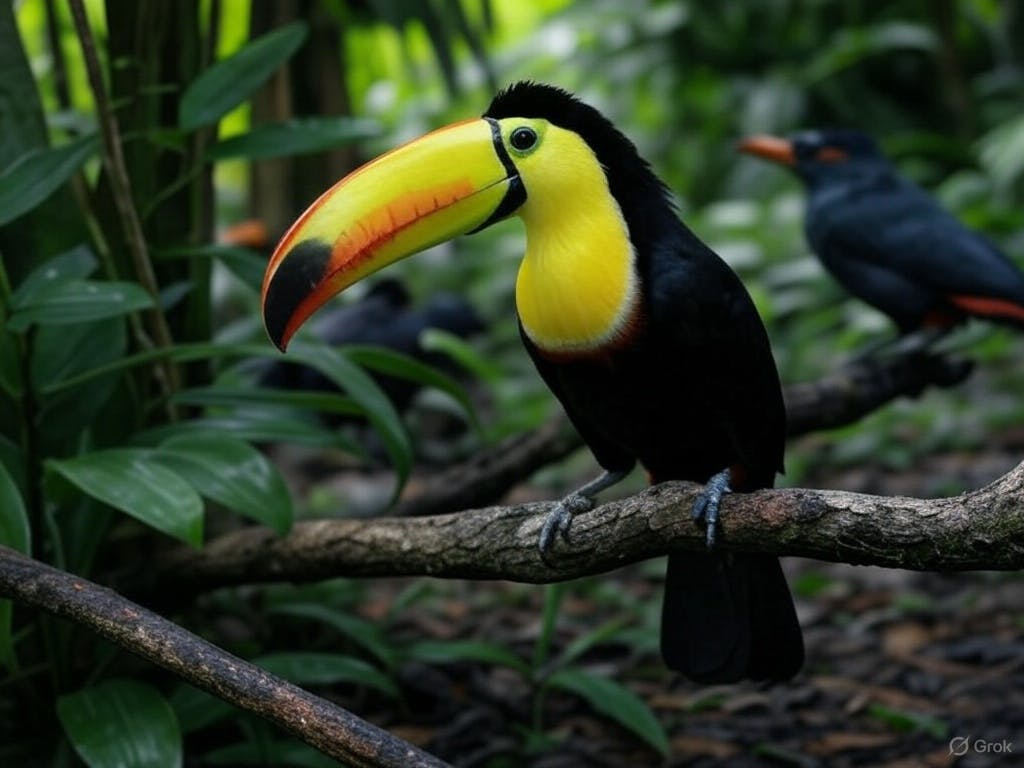
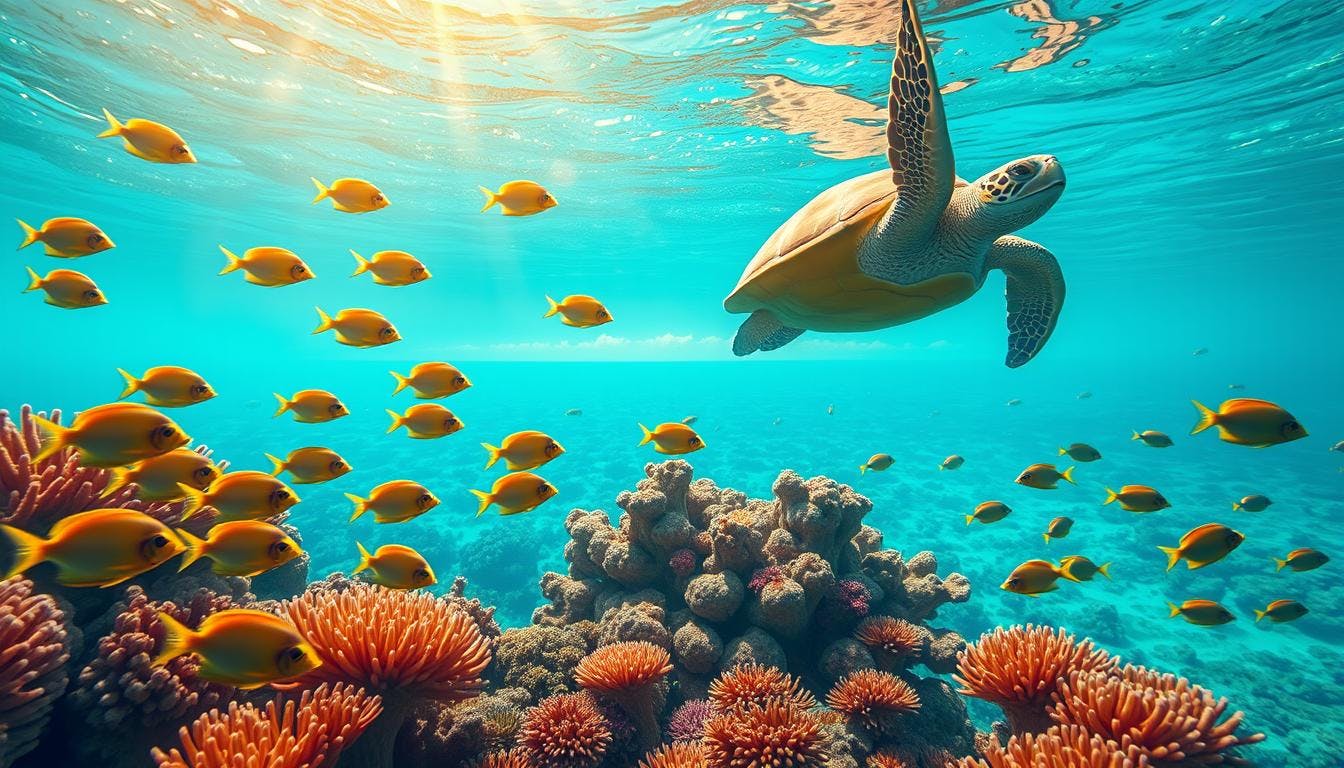
Marine biodiversity: snorkeling and diving hotspots
Raja Ampat is home to the highest fish diversity on the planet, with a staggering 1,606 species found in a single square mile. This Indonesian archipelago is also a haven for coral, sheltering 550 types—75% of all known hard corals.
To preserve these delicate ecosystems, buoyancy control certification is essential. Proper training helps avoid damaging coral and fragile sea fans. Many dive operators require divers to hold Advanced Open Water credentials for more advanced drift dives in these sensitive areas.
In Dominica, research on sperm whales allows for responsible encounters. Scientists track the whales’ vocalisations to understand their communication patterns. Tour operators are required to maintain a 10-metre distance during whale observations, ensuring minimal disturbance to these magnificent creatures.
Artificial reefs have shown promising results, with a 78% success rate in coral attachment worldwide. Sunken structures in locations such as Florida and Thailand are now thriving with marine life, helping to restore ecosystems lost due to environmental pressures.
The CoralWatch initiative provides colour charts to help with citizen science data collection, offering valuable insights into coral health. In 15 protected marine parks, night dives are only allowed with special permits to safeguard these areas.
Misool Reserve, in Indonesia, boasts an impressive 25 times more sharks than unprotected regions, underscoring the effectiveness of protection efforts. Visibility in prime dive spots like Cape Kri ranges from 10 to 30 metres, with nutrient-rich currents supporting large schools of pelagic fish. In just 90 minutes, divers have recorded 374 species of fish at this remarkable site.
Unique animal encounters you’ll never forget
Wildlife encounters create lasting memories when conducted responsibly. Observing animals in their natural habitats requires adhering to strict guidelines to ensure the safety of both the species and the visitors.
Minimum approach distances are essential for protecting sensitive wildlife. For example, gorilla treks in Uganda require a 10-metre distance, while bear viewing requires a 25-metre gap. These guidelines help to prevent undue stress and the transmission of diseases between humans and animals.
Research indicates that rehabilitation programs for animals can be highly effective. In Borneo, orangutans have a 92% survival rate after being released into the wild. Feeding bans are enforced in 89% of primate habitats to prevent dependency on human-provided food sources, ensuring the long-term health of these species.
Camera traps are an invaluable tool for studying elusive animals without disturbing them. Experts recommend using camera flashes with a brightness of less than 100 lumens to avoid startling nocturnal creatures. This approach has been used to document rare species, such as clouded leopards, in their natural environments.
Whale watching follows specific guidelines, such as maintaining a 45° approach angle to avoid collisions with the animals. In Sweden's taiga forests, wolf tracking experiences allow researchers to study collared packs, and each encounter contributes to ongoing conservation efforts.
In Uganda, the revenue generated from mountain gorilla treks funds anti-poaching patrols, contributing to the preservation of these endangered creatures. Similarly, Borneo’s Kinabatangan River provides a vital sanctuary for wild orangutans, while Patagonia employs non-invasive methods for tracking pumas, ensuring minimal disturbance to their natural behaviour.

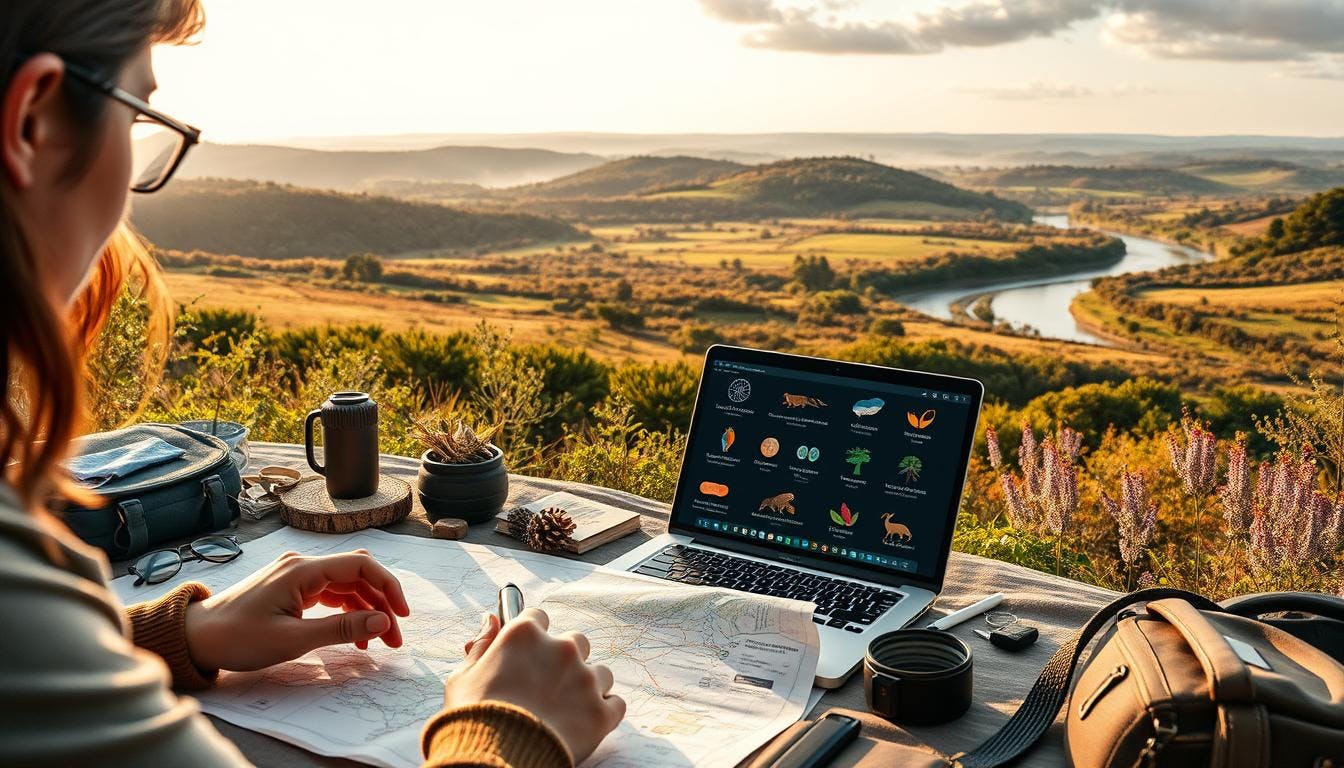
Planning your biodiversity-focused trip
Smart planning ensures that travel choices support conservation efforts while reducing environmental impact. When selecting accommodation, look for hotels with certifications recognised by the Global Sustainable Tourism Council (GSTC)—38 global labels validate sustainability practices. For example, over 87% of certified lodges, such as Costa Rica’s Hotel Belmar, operate using solar energy.
Carbon calculators are valuable tools for offsetting emissions. A $50 contribution can neutralise 2.3 tonnes of CO₂. To protect fragile ecosystems, pack reef-safe sunscreen and reusable water bottles, helping to minimise waste.
Visa regulations: 17 countries with high biodiversity require advance permits for entry, ensuring that tourism does not overwhelm sensitive areas.
Satellite devices provide 98% coverage in remote regions, enhancing safety and communication for travellers. Local guides, like Karen Castillo, bring valuable expertise, ensuring both authenticity and safety during your trip.
Prioritise accommodation that supports conservation efforts, such as reforestation initiatives or anti-poaching patrols. Small choices, such as avoiding single-use plastics, can accumulate to make a significant difference.
Supporting conservation efforts during your travels
Each journey provides an opportunity to support vital habitat preservation efforts. Tourism funding helps protect 1 acre of land for every $182 spent. These contributions play a crucial role in maintaining wildlife corridors and supporting anti-poaching patrols.
Certified organisations, such as the World Wildlife Fund, connect travellers with trusted programmes. Opt for activities that directly support ranger salaries or habitat restoration efforts. Many lodges display detailed conservation fee breakdowns at reception.
- Adopt-an-acre: Receive GPS coordinates of your sponsored land.
- Camera traps: $150 maintains a unit for 6 months of research.
- DNA kits: Help border agents identify trafficked species.
- Ranger training: 14,000 personnel trained across 12 countries.
- Emergency response: 24/7 medevac for injured wildlife.
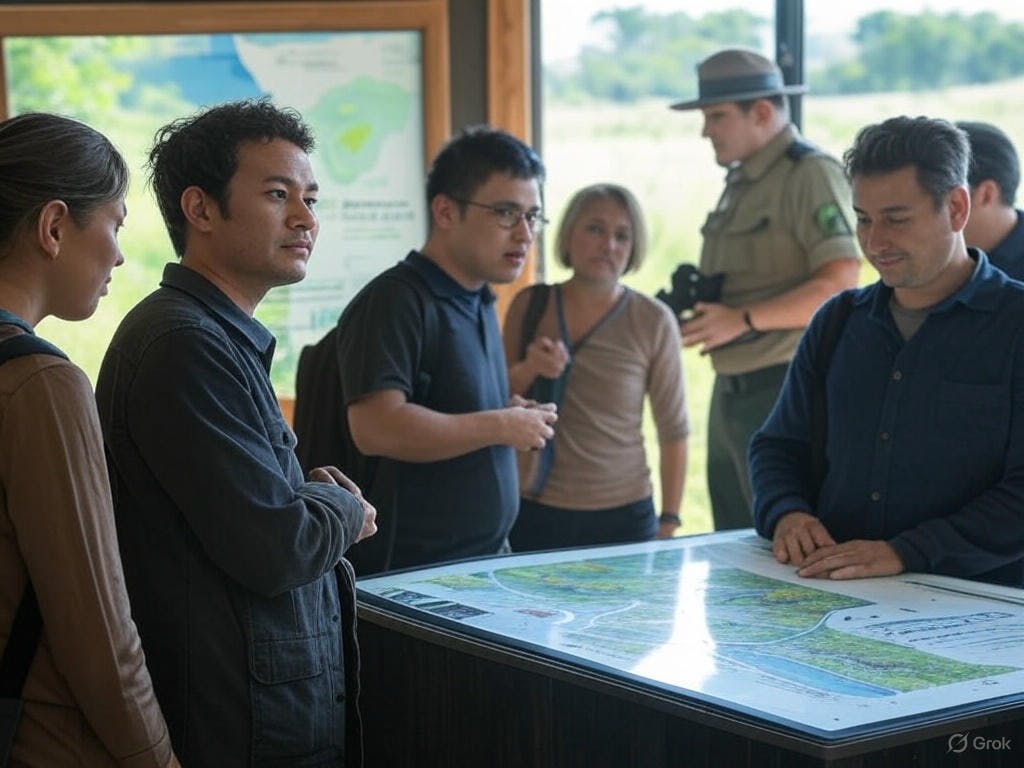
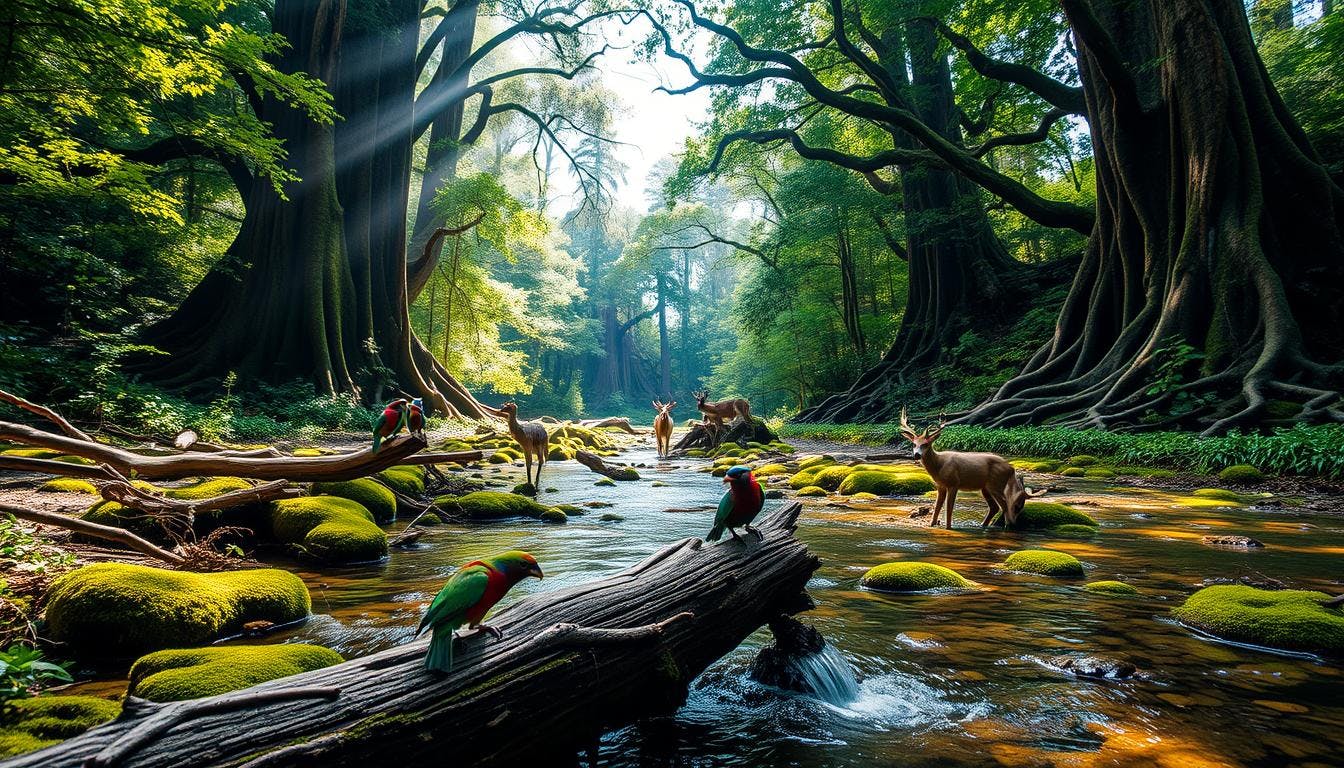
Off-the-beaten-path biodiversity destinations
Hidden biodiversity hotspots provide exceptional wildlife encounters, far from the crowds of popular tourist destinations. These regions offer protection for rare species within their untouched habitats, and by visiting, travellers directly contribute to conservation efforts.
- Guyana’s rainforests boast an impressive 87% canopy cover, one of the highest preservation rates on Earth. Community-run lodges within the jaguar corridor help fund anti-poaching patrols, with the majestic Kaieteur Falls—the world’s tallest single-drop waterfall—standing as a central feature of this pristine environment.
- Azerbaijan’s Hirkan National Park leads the restoration of the ancient Caspian Hyrcanian forests. Over 4,000 hectares now serve as a sanctuary for lynxes and brown bears, with visitor access tightly controlled to ensure the protection of these critical areas.
- In Papua New Guinea, tree kangaroo monitoring treks involve local tribes in their efforts. Researchers and tourists track these unique marsupials through the misty cloud forests, with the initiative both preserving their habitat and creating employment opportunities for the local community.
- The Caucasus Mountains of Georgia enforce strict protocols for leopard sightings. With the aid of infrared cameras and experienced guides, the impact on wildlife is minimised, ensuring that these rare creatures are protected from human disturbance.
- In the Comoros, regulations govern diving activities near coelacanth habitats, helping protect these ‘living fossils,’ which have survived for over 400 million years.
Seasonal travel tips for wildlife enthusiasts
Timing is crucial when witnessing some of nature’s most awe-inspiring events. Monarch butterflies migrate to Mexico within a specific 12-day window each winter. Their arrival is just one example of the many seasonal patterns worth tracking.
- Africa's Great Migration follows a predictable path, with herds travelling from Tanzania’s Serengeti to Kenya’s Maasai Mara between July and October. This movement creates excellent viewing opportunities as predators and prey interact.
- Arctic terns embark on one of the most impressive migrations, completing a pole-to-pole journey of 25,000 miles annually. Their stopovers are precisely timed to coincide with fish spawning cycles, providing a reliable viewing window along coastal areas.
- Borneo’s pygmy elephants adjust their travel routes to coincide with mushroom fruiting seasons. These animals are known to change their movements when fungi bloom in the rainforests, so tracking these patterns can improve sighting chances.
- Turtle nesting follows lunar cycles, with most turtles emerging on dark nights. This timing is crucial for the survival of hatchlings and makes for spectacular viewing experiences.
- Climate shifts have affected 14% of wildlife migration and behaviour patterns since 2010, leading to altered timings and locations.
- During Africa’s dry seasons, animals concentrate around water sources in national parks, making it easier to spot wildlife during this period.
By using these tips, travellers can time their visits to align with peak activity periods. Checking regional wildlife calendars ensures that you are in the right place at the right time for optimal viewing of your target species.
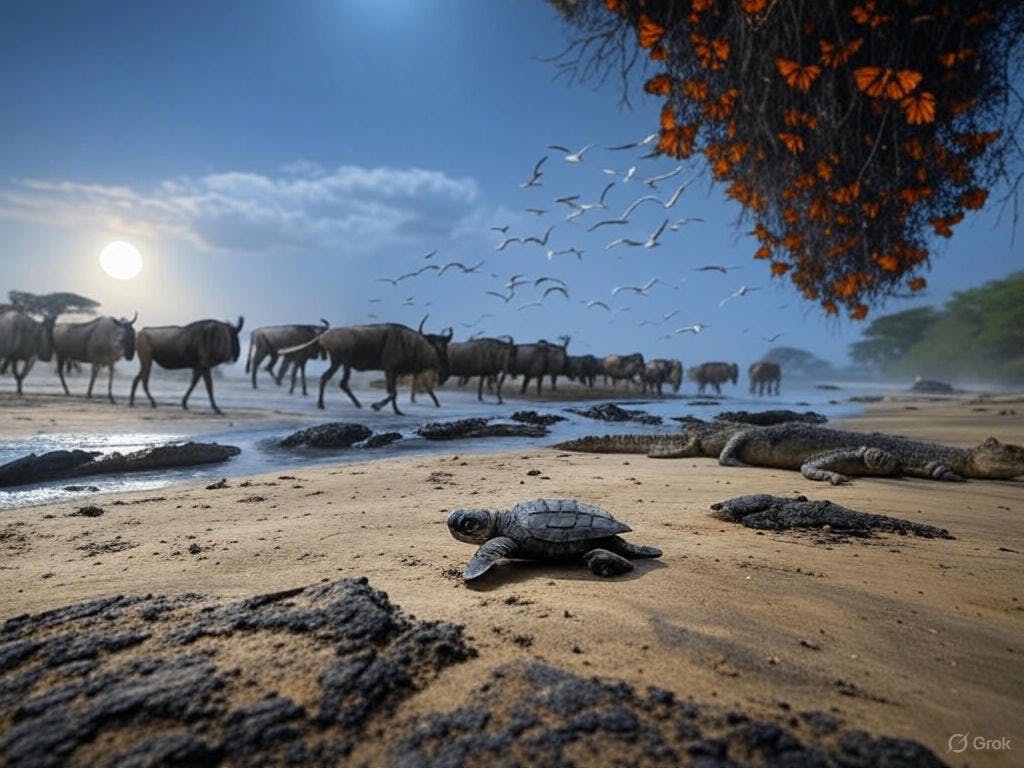
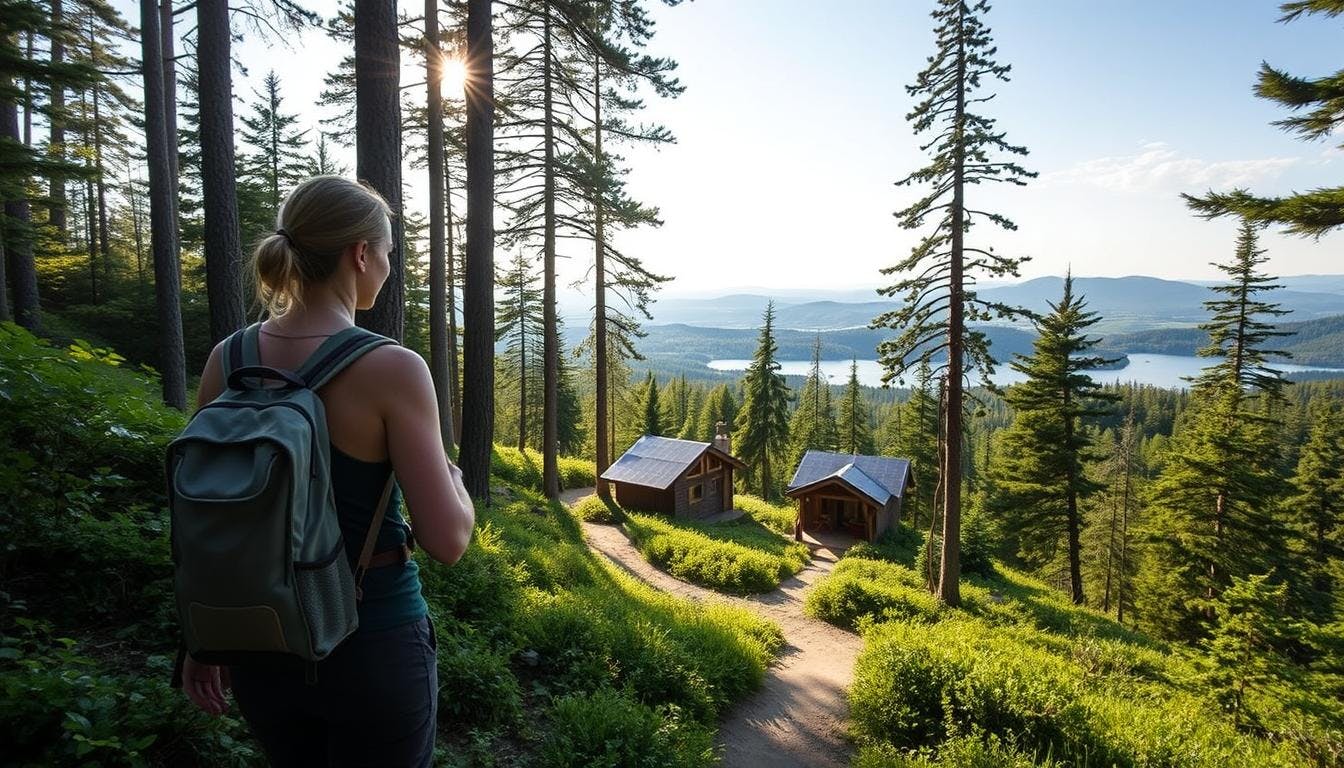
How to reduce your impact on nature
Travelling responsibly involves making thoughtful choices to reduce environmental impact. Small adjustments in daily habits and packing can significantly lower waste and emissions.
- Water conservation: Swapping bottled water for filtered alternatives prevents unnecessary plastic waste and reduces emissions—each 500ml bottle avoided saves approximately 82g of CO₂.
- Waste reduction: Carrying a reusable bottle and using microplastic filtration systems for laundry help prevent plastic pollution, particularly in sensitive areas. A good guideline is to carry out 1kg of waste per five-day trip.
- Sanitation: Biodegradable toilet paper decomposes three times faster than standard brands, reducing long-term impact.
- Noise control: Sound pollution affects wildlife behaviour—keeping noise levels under 45dB in protected areas minimises disruption.
- Land preservation: Satellite-based campsite rotation prevents soil erosion, ensuring frequently visited locations remain intact.
Additional ways to minimise impact include:
- Using public transport, cycling, or walking instead of relying on fuel-powered transport.
- Staying at lodges that prioritise solar energy and waste reduction measures.
Small choices contribute to preserving the natural landscapes and wildlife that make travel so rewarding.
Partnering with local guides and communities
Local guides enrich travel experiences while strengthening regional economies. The World Tourism Organization recommends that 68% of tour costs benefit local communities, ensuring tourism directly supports those who live there.
- Expert knowledge: Certified guides enhance trips by sharing in-depth ecological and cultural insights. Training programmes in 12 languages equip them to lead responsible tours, with research showing that guided experiences improve visitor satisfaction by 42%.
- Homestays: Locally run accommodation networks follow strict quality standards. Families welcome guests into their homes, fostering meaningful cultural exchanges. Rainforest Expeditions, for instance, collaborates with Comunidad Infierno, ensuring indigenous hosts receive a fair share of tourism revenue.
- Cultural preservation: Mapping traditional knowledge helps safeguard heritage for 140 indigenous groups. Cooperative tourism models allow communities to set fair prices for their services. Operators like Gondwana Tours prioritise hiring local guides, creating employment opportunities.
- Safety and sustainability: A guide-to-tourist ratio of 1:6 improves group management, reduces disturbance to natural areas, and enhances wildlife viewing opportunities.
Supporting well-trained local guides not only leads to more immersive travel experiences but also ensures communities benefit fairly from tourism.
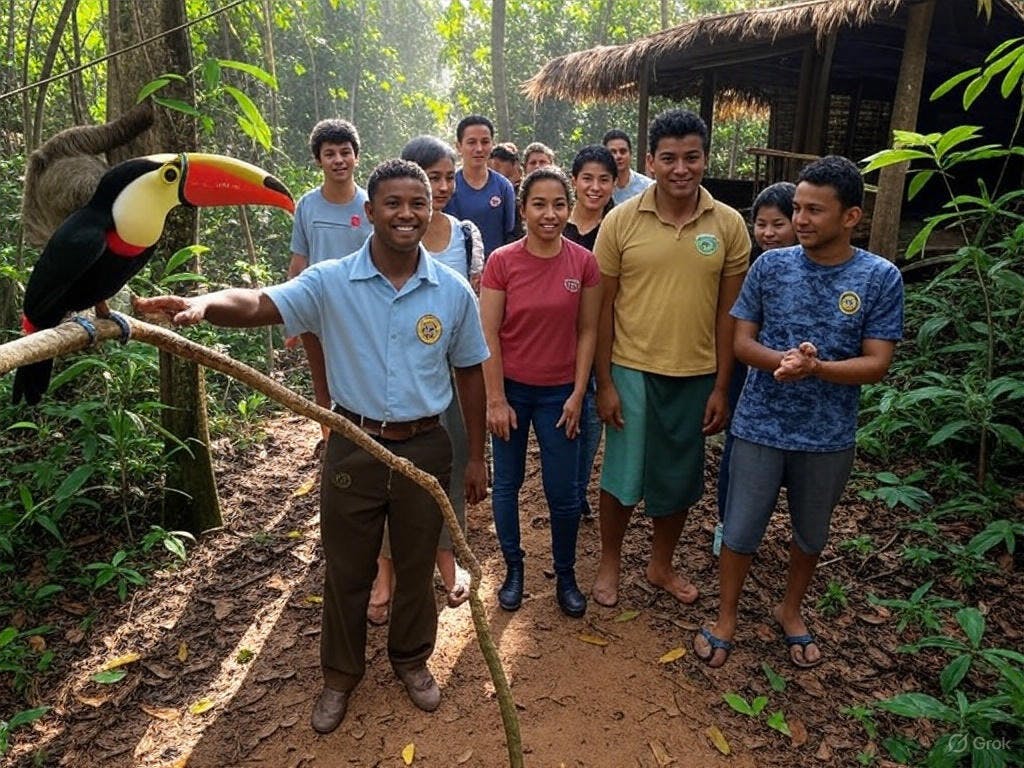
Your next steps towards a sustainable adventure
Ready to turn your travel plans into a positive force? Start with a 30-day pre-trip checklist focused on conservation education. Familiarise yourself with local ecosystems and responsible wildlife interactions before you depart.
Choose from over 380 verified operators committed to sustainability. These partners adhere to strict guidelines that protect nature while offering unforgettable experiences. Many offer options to offset your trip’s carbon emissions.
Safety is crucial. Review emergency protocols for your destination—67 countries have tailored plans in place. After your trip, use impact reports to see how your visit has contributed to conservation efforts.
Simple actions can make a significant difference. Pack reusable items, support local businesses, and stay at certified accommodations. Every choice you make helps protect the places you visit.
17 South Street
Auckland 1010
New Zealand
info@carbonclick.com- -
- X
Sign up. Be inspired. Get clicking.
Subscribe now to stay up to date with CarbonClick, carbon offsetting and climate action.
By signing up you agree to our Privacy Policy.


